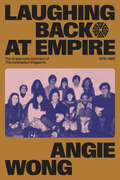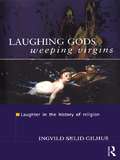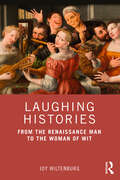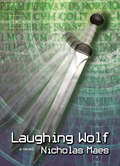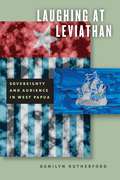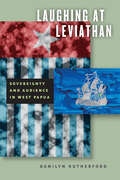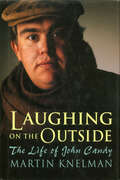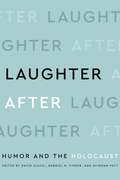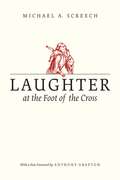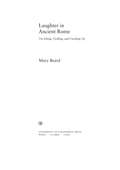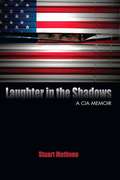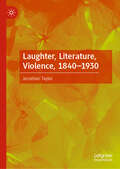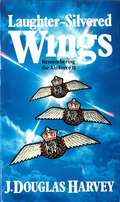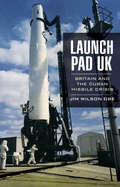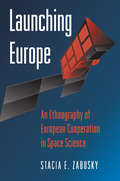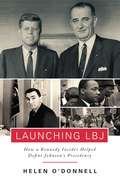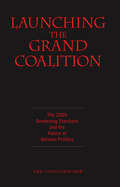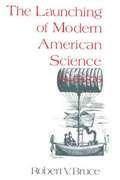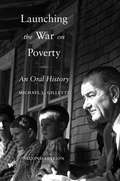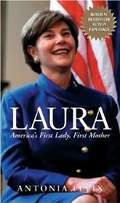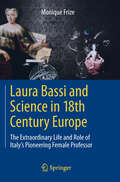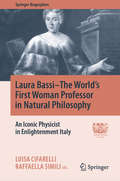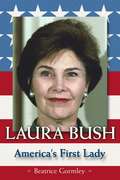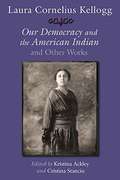- Table View
- List View
Laughing Back at Empire: The Grassroots Activism of The Asianadian Magazine, 1978–1985 (Human Rights and Social Justice Series #3)
by Angie WongAsian Canadian activism, resistance, and art of the 1970s and 80s Laughing Back at Empire is a ground-breaking examination of The Asianadian, one of Canada’s first anti-racist, anti- sexist, and anti-homophobic magazines. Over the course of its seven-year run, the small but mighty magazine led a nation-wide dialogue for all Canadians on the struggles and social issues that concerned Asians in Canada. The Asianadian established a national platform for then-emerging Asian Canadian writers, artists, musicians, activists, and scholars like Sky Lee, Jim Wong-Chu, Joy Kogawa, Himani Bannerji, and Paul Yee. Columns like “On the Firing Line” and the “Dubious Achievement Awards” provided space to laugh back at the embarrassing concoction of Orientalist stereotypes in the media and to critique inconsistencies and superficialities within Canada’s newfound multicultural image. Situating the story of The Asianadian within the history of Canada, Angie Wong celebrates and builds on the work of its creators from the Asianadian Resource Workshop. Extensive interview material with the co-founding members, editors, volunteers, readers, and contributors captures their dedication and spirit of anti-racist collectivism. Wong’s analysis helps to dismantle cultural assumptions that have relegated Asian Canadian history, contributions, and injustices to the periphery of Canadian experience and identity. On the heels of the COVID-19 pandemic and a resurgence of anti-Asian racism, Laughing Back at Empire amplifies the voices that speak, shout, and laugh together at empire’s self-congratulatory and exclusionary narratives.
Laughing Gods, Weeping Virgins: Laughter in the History of Religion
by Ingvild Saelid GilhusLaughing Gods, Weeping Virgins analyses how laughter has been used as a symbol in myths, rituals and festivals of Western religions, and has thus been inscribed in religious discourse. The Mesopotamian Anu, the Israelite Jahweh, the Greek Dionysos, the Gnostic Christ and the late modern Jesus were all laughing gods. Through their laughter, gods prove both their superiority and their proximity to humans.In this comprehensive study, Professor Gilhus examines the relationship between corporeal human laughter and spiritual divine laughter from c`ussical antiquity, to the Christian West and the modern era. She combines the study of the history of religion with social-scientific approaches, to provide an original and pertinent exploration of a universal human phenomenon, and its significance for the development of religions.
Laughing Histories: From the Renaissance Man to the Woman of Wit
by Joy WiltenburgLaughing Histories breaks new ground by exploring moments of laughter in early modern Europe, showing how laughter was inflected by gender and social power. "I dearly love a laugh," declared Jane Austen's heroine Elizabeth Bennet, and her wit won the heart of the aristocratic Mr. Darcy. Yet the widely read Earl of Chesterfield asserted that only "the mob" would laugh out loud; the gentleman should merely smile. This literary contrast raises important historical questions: how did social rules constrain laughter? Did the highest elites really laugh less than others? How did laughter play out in relations between the sexes? Through fascinating case studies of individuals such as the Renaissance artist Benvenuto Cellini, the French aristocrat Madame de Sévigné, and the rising civil servant and diarist Samuel Pepys, Laughing Histories reveals the multiple meanings of laughter, from the court to the tavern and street, in a complex history that paved the way for modern laughter. With its study of laughter in relation to power, aggression, gender, sex, class, and social bonding, Laughing Histories is perfect for readers interested in the history of emotions, cultural history, gender history, and literature.
Laughing Wolf
by Nicholas MaesShort-listed for the 2010 Saskatchewan Young Reader’s Choice Award - Snow Willow and for the 2010 Manitoba Young Reader’s Choice Award It is the year 2213. Fifteen-year-old Felix Taylor is the last person on Earth who can speak and read Latin. In a world where technology has defeated war, crime, poverty, and famine, and time travel exists as a distinct possibility, Felix’s language skills and knowledge seem out of place and irrelevant. But are they? A mysterious plague has broken out. Scientists can’t stop its advance, and humanity is suddenly poised on the brink of eradication. The only possible cure is Lupus Ridens, or Laughing Wolf, a flower once common in ancient Rome but extinct for more than 2,000 years. Felix must project back to Roman times circa 71 B.C. and retrieve the flower. But can he navigate through the dangers and challenges of the world of Spartacus, Pompey, and Cicero? And will he find the Laughing Wolf in time to save his family and everyone else from the Plague of Plagues?
Laughing at Leviathan: Sovereignty and Audience in West Papua
by Danilyn RutherfordFor West Papua and its people, the promise of sovereignty has never been realized, despite a long and fraught struggle for independence from Indonesia. In Laughing at Leviathan, Danilyn Rutherford examines this struggle through a series of interlocking essays that drive at the core meaning of sovereignty itself--how it is fueled, formed, and even thwarted by pivotal but often overlooked players: those that make up an audience. Whether these players are citizens, missionaries, competing governmental powers, nongovernmental organizations, or the international community at large, Rutherford shows how a complex interplay of various observers is key to the establishment and understanding of the sovereign nation-state. Drawing on a wide array of sources, from YouTube videos to Dutch propaganda to her own fieldwork observations, Rutherford draws the history of Indonesia, empire, and postcolonial nation-building into a powerful examination of performance and power. Ultimately she revises Thomas Hobbes, painting a picture of the Leviathan not as a coherent body but a fragmented one distributed across a wide range of both real and imagined spectators. In doing so, she offers an important new approach to the understanding of political struggle.
Laughing at Leviathan: Sovereignty and Audience in West Papua (Chicago Studies in Practices of Meaning)
by Danilyn RutherfordFor West Papua and its people, the promise of sovereignty has never been realized, despite a long and fraught struggle for independence from Indonesia. In Laughing at Leviathan, Danilyn Rutherford examines this struggle through a series of interlocking essays that drive at the core meaning of sovereignty itself—how it is fueled, formed, and even thwarted by pivotal but often overlooked players: those that make up an audience. Whether these players are citizens, missionaries, competing governmental powers, nongovernmental organizations, or the international community at large, Rutherford shows how a complex interplay of various observers is key to the establishment and understanding of the sovereign nation-state. Drawing on a wide array of sources, from YouTube videos to Dutch propaganda to her own fieldwork observations, Rutherford draws the history of Indonesia, empire, and postcolonial nation-building into a powerful examination of performance and power. Ultimately she revises Thomas Hobbes, painting a picture of the Leviathan not as a coherent body but a fragmented one distributed across a wide range of both real and imagined spectators. In doing so, she offers an important new approach to the understanding of political struggle.
Laughing on the Outside: The Life of John Candy
by Martin Knelman“A truthful look at John Candy—affectionate but unblinking.” —San Francisco ExaminerFunny and gentle, John Candy was loved by millions of movie fans for playing true-to-life characters. Whether as the irrepressible bon vivant in Splash, the misunderstood slob in Uncle Buck, or the generous lonely salesman in Planes, Trains, and Automobiles, John Candy struck a perfect balance between self-deprecating humor and irresistible, emotional warmth. In this compassionate portrait of John Candy, award-winning journalist Martin Knelman reveals that behind the scenes, beneath the booming laughter, a man blessed by genius and goodness of heart was ultimately and sadly undermined by self-doubt and misguided ambition.“Laughing on the Outside celebrates the genius of John Candy.” —Vanity Fair“Candy’s is ultimately a sad story, one that Knelman has made sympathetic and memorable, too.” —Booklist“This book is a must for Candy’s fans and an ought-to for everyone else.” —Toronto Globe and Mail“Everyone knew the happy-go-lucky comic, but Knelman shows us the sad clown underneath, which ultimately enriches the image.” —Toronto Star
Laughter After: Humor and the Holocaust
by Ilan Stavans Marc Caplan Jarrod Tanny David Shneer Anna Shternshis Gabriel N. Finder Jan Schwarz Avinoam Patt David Slucki Steve Whitfield Jennifer Caplan Liat Steir Livny Jordana Silverstein Ferne PearlsteinLaughter After: Humor and the Holocaust argues that humor performs political, cultural, and social functions in the wake of horror. Co-editors David Slucki, Gabriel N. Finder, and Avinoam Patt have assembled an impressive list of contributors who examine what is at stake in deploying humor in representing the Holocaust. Namely, what are the boundaries? Clearly, there have been comedy and laughter in the decades since. However, the extent to which humor can be ethically deployed in representing and discussing the Holocaust is not as clear. This book comes at an important moment in the trajectory of Holocaust memory. As the generation of survivors continues to dwindle, there is great concern among scholars and community leaders about how memories and lessons of the Holocaust will be passed to future generations. Without survivors to tell their stories, to serve as constant reminders of what they experienced, how will future generations understand and relate to the Shoah? Laughter After is divided into two sections: "Aftermath" and "Breaking Taboos." The contributors to this volume examine case studies from World War II to the present day in considering and reconsidering what role humor can play in the rehabilitation of survivors, of Jews and of the world more broadly. More recently, humor has been used to investigate the role that Holocaust memory plays in contemporary societies, while challenging memorial conventions around the Holocaust and helping shape the way we think about the past. In a world in which Holocaust memory is ubiquitous, even if the Holocaust itself is inadequately understood, it is perhaps not surprising that humor that invokes the Holocaust has become part of the memorial landscape. This book seeks to uncover how and why such humor is deployed, and what the factors are that shape its production and reception. Laughter After will appeal to a number of audiences—from students and scholars of Jewish and Holocaust studies to academics and general readers with an interest in media and performance studies.
Laughter at the Foot of the Cross
by Michael A. Screech“Christian laughter is a maze: you could easily get snarled up within it.” So says Michael A. Screech in his note to readers preceding this collection of fifty-three elegant and pithy essays. As Screech reveals, the question of whether laughter is acceptable to the god of the Old and New Testaments is a dangerous one. But we are fortunate in our guide: drawing on his immense knowledge of the classics and of humanists like Erasmus and Rabelais—who used Plato and Aristotle to interpret the Gospels—and incorporating the thoughts of Aesop, Calvin, Lucian of Samosata, Luther, Socrates, and others, Screech shows that Renaissance thinkers revived ancient ideas about what inspires laughter and whether it could ever truly be innocent. As Screech argues, in the minds of Renaissance scholars, laughter was to be taken very seriously. Indeed, in an era obsessed with heresy and reform, this most human of abilities was no laughing matter.
Laughter in Ancient Rome
by Mary BeardWhat made the Romans laugh? Was ancient Rome a carnival, filled with practical jokes and hearty chuckles? Or was it a carefully regulated culture in which the uncontrollable excess of laughter was a force to fear--a world of wit, irony, and knowing smiles? How did Romans make sense of laughter? What role did it play in the world of the law courts, the imperial palace, or the spectacles of the arena? Laughter in Ancient Rome explores one of the most intriguing, but also trickiest, of historical subjects. Drawing on a wide range of Roman writing--from essays on rhetoric to a surviving Roman joke book--Mary Beard tracks down the giggles, smirks, and guffaws of the ancient Romans themselves. From ancient "monkey business" to the role of a chuckle in a culture of tyranny, she explores Roman humor from the hilarious, to the momentous, to the surprising. But she also reflects on even bigger historical questions. What kind of history of laughter can we possibly tell? Can we ever really "get" the Romans' jokes?
Laughter in the Shadows
by Stuart E. MethvenThis memoir of a CIA operations officer captures the spirit of the early years of the Agency, a period sometimes described as its 'finest hours.' Using the alias 'St. Martin,' Stuart Methven served in the CIA from the 1950s through the 1970s. The book opens by describing the author's training in the clandestine arts and subsequent assignment to Asia in a country he calls 'Bushido.' There he is involved in numerous operations, including one that takes him under the ocean, and earns his case officer's 'brevet.' A nation-building program in 'Cham' follows, which begins well enough and includes his gaining a tribal leader's confidence by parachuting badly needed supplies to his mountain village. It ends abruptly, however, with a coup d'etat and civil war that forces Methven's evacuation, the first of several during his career.His next assignment is in South Vietnam working to counter another budding insurgency. Methven spends four years in the mountain and delta provinces of Vietnam before being given a sabbatical for graduate work in international studies back in the states. After completing his studies, he returns to Southeast Asia as a deputy station chief with a focus on a large Soviet mission in Samudra and the recruitment of Soviet military officers. Promoted to station chief, his final assignment is in central Africa, where his station becomes center stage for a large covert operation that eventually involves the Soviets and Cubans. Glimpses of the CIA from the inside are rare, and Methven's recollections of his experiences during a formative period in the Agency's history will be of particular value to those with an interest in the CIA and international affairs and in spy stories.
Laughter, Literature, Violence, 1840–1930
by Jonathan TaylorLaughter, Literature, Violence, 1840-1930 investigates the strange, complex, even paradoxical relationship between laughter, on the one hand, and violence, war, horror, death, on the other. It does so in relation to philosophy, politics, and key nineteenth- and twentieth-century literary texts, by Edgar Allan Poe, Edmund Gosse, Wyndham Lewis and Katherine Mansfield – texts which explore the far reaches of Schadenfreude, and so-called ‘superiority theories’ of laughter, pushing these theories to breaking point. In these literary texts, the violent superiority often ascribed to laughter is seen as radically unstable, co-existing with its opposite: an anarchic sense of equality. Laughter, humour and comedy are slippery, duplicitous, ambivalent, self-contradictory hybrids, fusing apparently discordant elements. Now and then, though, literary and philosophical texts also dream of a different kind of laughter, one which reaches beyond its alloys – a transcendent, ‘perfect’ laughter which exists only in and for itself.
Laughter-Silvered Wings: Remembering the Air Force II
by J. Douglas HarveyLaughter-Silvered Wings: Remembering the Air Force II
Launch Pad UK: Britain and the Cuban Missile Crisis
by Jim WilsonFor most British people the weekend of 27/28 October 1962 could so very easily have been their last weekend on earth, yet astonishingly the fact that Britain's nuclear deterrent forces went to an unprecedented level of readiness was kept secret from the public. Thor nuclear-tipped ballistic missiles stood on a round-the-clock wartime state of alert ready to be fired, these were the 'other' missiles of the Cuban Missile Crisis, which made Britain, in effect, America's launch pad. During the height of the crisis both RAF Bomber Command and the US Strategic Air Command were poised at the highest states of readiness. Both were ordered to a level of war readiness unparalleled throughout the whole of the forty years of Cold War.There is evidence to suggest that had the US needed to launch an air strike against Russian missiles in Cuba, President Kennedy might have been willing to absorb a Soviet nuclear assault on a NATO ally without retaliation, if it would have avoided escalation to World War Three.It is sobering to those who lived through that period that, the British Ambassador to Cuba commented: 'If it was a nuclear war we were headed for, Cuba was perhaps a better place to be than Britain!'
Launching Europe: An Ethnography of European Cooperation in Space Science
by Stacia E. ZabuskyIn this first ethnographic study of the European Space Agency, Stacia Zabusky explores the complex processes involved in cooperation on space science missions in the contemporary context of European integration. Zabusky argues that the practice of cooperation does not depend on a homogenizing of interests in a bland unity. Instead, it consists of ongoing negotiation of and conflict over often irreconcilable differences. In this case, those differences are put into play by both technical and political divisions of labor (in particular, those of big science and of European integration). Zabusky shows how participants on space science missions make use of these differences, particularly those manifest in identities of work and of nationality, as they struggle together not only to produce space satellites but also to create European integration. She argues that the dialectical processes of production include and depend on conflict and contradiction to maintain energy and excitement and thus to be successful. Participants in these processes are not, however, working only to produce tangible success. In her epilogue, Zabusky argues that European space science missions can be interpreted as sacred journeys undertaken collectively, and that these journeys are part of a fundamental cultural project of modernity: the legitimation of and aspiration for purity. She suggests, finally, that this project characterizes not only the institution of technoscience but those of bureaucracy and nationalism as well.
Launching LBJ: How a Kennedy Insider Helped Define Johnson's Presidency
by O'Donnell HelenKenneth O'Donnell was JFK's Chief of Staff, among the group known as Kennedy's "Irish Mafia." O’Donnell was with Jack Kennedy through his entire time in office… and he was on Air Force One in Dallas, at Jacqueline Kennedy’s side, as Lyndon Johnson got sworn in. When John F. Kennedy was assassinated, LBJ asked Ken O’Donnell to stay on and work with him through the first nine months of his administration, to help the country transition and heal, and to help Johnson set his own agenda for his presidency. Although they were political adversaries, they developed a mutually respectful rapport, and Ken helped LBJ find his voice, starting with his work in voting rights and developing the civil rights agenda. Ken O’Donnell was a prolific diarist and note taker, and in Launching LBJ, his daughter Helen, a respected historian and journalist in her own right, takes her father's journals and fills in the gaps to create an unprecedented, inside look at the early days of President Lyndon Johnson's regime.
Launching The Grand Coalition: The 2005 Bundestag Election and the Future of German Politics
by Eric LangenbacherThis edited volume, which brings together the leading experts in German politics from around the US and Germany, combines rich descriptive data with insightful analyses regarding one of the most dramatic and important election years in postwar Germany. A variety of more specialized issues and perspectives is addressed, including the transatlantic relationship, EU policy, voting behavior and far Right parties. This book will be essential reading for students of German, European and comparative politics.
Launching the War on Poverty: An Oral History , 2nd Edition
by Michael L. GilletteHead Start, Job Corps, Foster Grandparents, College Work-Study, VISTA, Community Action, and the Legal Services Corporation are familiar programs, but their tumultuous beginning has been largely forgotten. Conceived amid the daring idealism of the 1960s, these programs originated as weapons in Lyndon Johnson's War on Poverty, an offensive spearheaded by a controversial new government agency. Within months, the Office of Economic Opportunity created an array of unconventional initiatives that empowered the poor, challenged the established order, and ultimately transformed the nation's attitudes.
Laura America's First Lady, First Mother
by Antonia FelixThis is a biography of the First Lady Laura Bush. There notes and references in the back.
Laura Bassi and Science in 18th Century Europe: The Extraordinary Life and Role of Italy's Pioneering Female Professor
by Monique FrizeThis book presents the extraordinary story of a Bolognese woman of the settecento. Laura Maria Caterina Bassi (1711-1778) defended 49 Theses at the University of Bologna on April 17, 1732 and was awarded a doctoral degree on May 12 of the same year. Three weeks before her defense, she was made a member of the Academy of Sciences in Bologna. On June 27 she defended 12 additional Theses. Several of the 61 Theses were on physics and other science topics. Laura was drawn by the philosophy of Newton at a time when most scientists in Europe were still focused on Descartes and Galen. This last set of Theses was to encourage the University of Bologna to provide a lectureship to Laura, which they did on October 29, 1732. Although quite famous in her day, Laura Bassi is unfortunately not remembered much today. This book presents Bassi within the context of the century when she lived and worked, an era where no women could attend university anywhere in the world, and even less become a professor or a member of an academy. Laura was appointed to the Chair of experimental physics in 1776 until her death. Her story is an amazing one. Laura was a mother, a wife and a good scientist for over 30 years. She made the transition from the old science to the new very early on in her career. Her work was centered on real problems that the City of Bologna needed to solve. It was an exciting time of discovery and she was at the edge of it all the way.
Laura Bassi–The World's First Woman Professor in Natural Philosophy: An Iconic Physicist in Enlightenment Italy (Springer Biographies)
by Luisa Cifarelli Raffaella SimiliThis book provides a fascinating insight into the life and scientific work of Laura Bassi, the first female member of the influential Academy of Sciences of the Institute of Bologna and also the first woman to be appointed a university professor in physics, or universal philosophy as it was then termed. The book describes Laura Bassi’s research activities and achievements, explaining the influence of Newton, her role in promoting Newtonian experimental physics in Bologna, and her work as an experimentalist, including on electricity. Much attention is paid to the context in which Bassi developed her career. The very considerable difficulties faced by a woman surrounded by male university teachers and members of the Academy are discussed, casting light on the constraints that led Bassi to set up the first experimental physics laboratory in her home, complete with the many instruments required for experimentation and private teaching. The aim is to provide a rounded and well-documented account of the scientific endeavors and achievements of a too often overlooked scientist who struggled to overcome the prejudices of her age.
Laura Blundy
by Julie MyersonLondon, mid-1800s: On a thundery afternoon, pursuing an obsession, Laura murders the man who saved her life--her husband.
Laura Cornelius Kellogg: Our Democracy And The American Indian And Other Works (The Iroquois And Their Neighbors)
by Kristina Ackley Cristina StanciuLaura Cornelius Kellogg was an eloquent and fierce voice in early twentieth century Native American affairs. An organizer, author, playwright, performer, and linguist, Kellogg worked tirelessly for Wisconsin Oneida cultural self-determination when efforts to Americanize Native people reached their peak. She is best known for her extraordinary book Our Democracy and the American Indian (1920) and as a founding member of the Society of American Indians. In an era of government policies aimed at assimilating Indian peoples and erasing tribal identities, Kellogg supported a transition from federal paternalism to self-government. She strongly advocated for the restoration of tribal lands, which she considered vital for keeping Native nations together and for obtaining economic security and political autonomy. <p><p> Although Kellogg was a controversial figure, alternately criticized and championed by her contemporaries, her work has endured in Oneida community memory and among scholars in Native American studies, though it has not been available to a broader audience. Ackley and Stanciu resurrect her legacy in this comprehensive volume, which includes Kellogg’s writings, speeches, photographs, congressional testimonies, and coverage in national and international newspapers of the time. In an illuminating and richly detailed introduction, the editors show how Kellogg’s prescient thinking makes her one of the most compelling Native intellectuals of her time.
